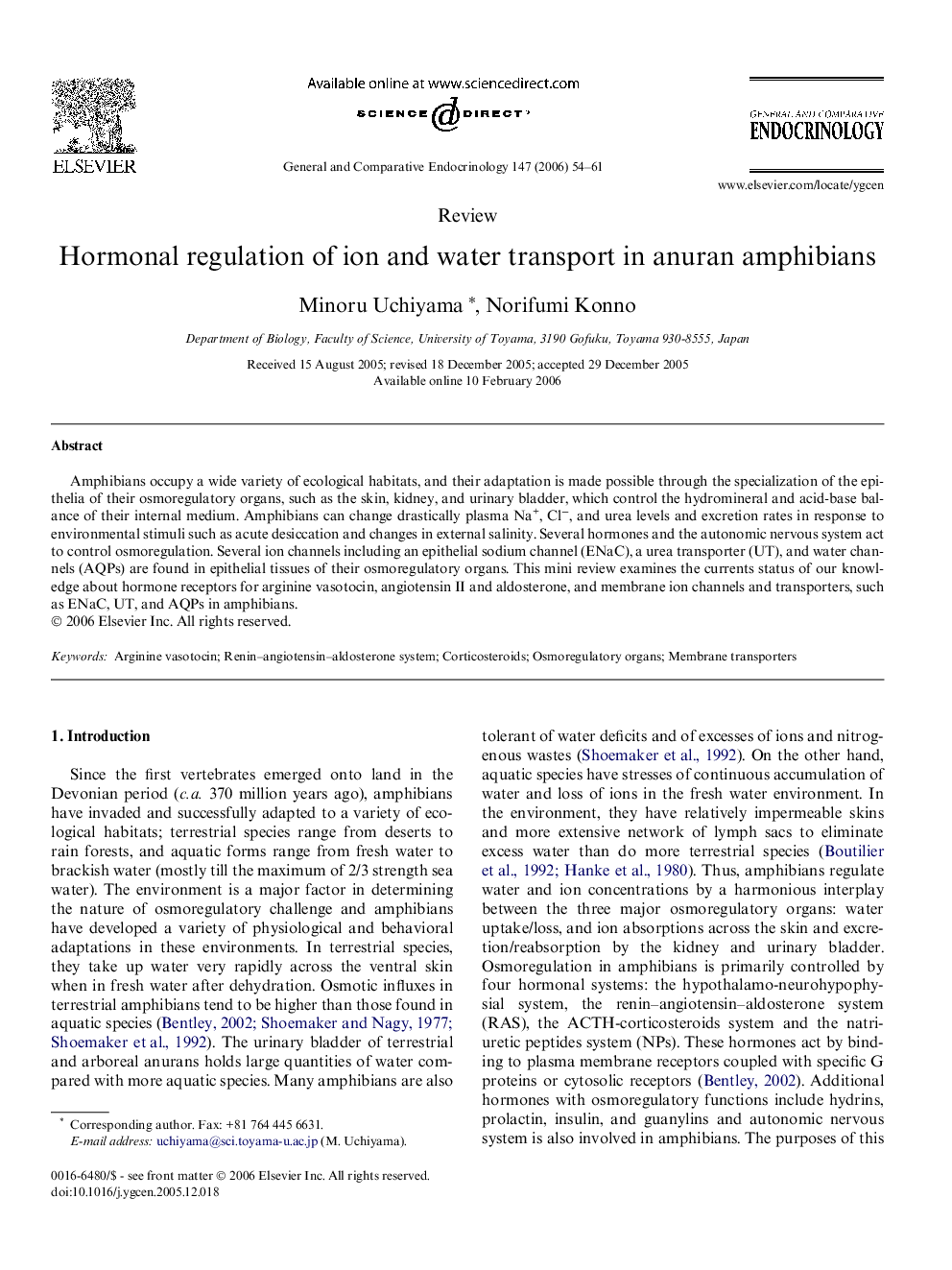| Article ID | Journal | Published Year | Pages | File Type |
|---|---|---|---|---|
| 2802337 | General and Comparative Endocrinology | 2006 | 8 Pages |
Amphibians occupy a wide variety of ecological habitats, and their adaptation is made possible through the specialization of the epithelia of their osmoregulatory organs, such as the skin, kidney, and urinary bladder, which control the hydromineral and acid-base balance of their internal medium. Amphibians can change drastically plasma Na+, Cl−, and urea levels and excretion rates in response to environmental stimuli such as acute desiccation and changes in external salinity. Several hormones and the autonomic nervous system act to control osmoregulation. Several ion channels including an epithelial sodium channel (ENaC), a urea transporter (UT), and water channels (AQPs) are found in epithelial tissues of their osmoregulatory organs. This mini review examines the currents status of our knowledge about hormone receptors for arginine vasotocin, angiotensin II and aldosterone, and membrane ion channels and transporters, such as ENaC, UT, and AQPs in amphibians.
